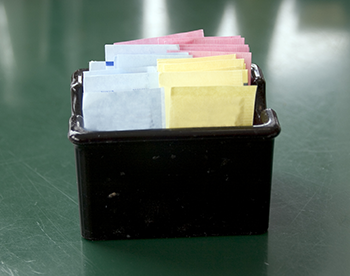A school-based salad bar may be the best way to do it. Research supports that kids will increase their consumption of produce when they are given a variety of choices from a school salad bar. “I have found that anytime children can select for themselves it [fruit or vegetable] consumption does increase, “ claims Deborah Beauvais, RDN, School Nutrition Director in Rochester, New York, and spokesperson for the Academy of Nutrition and Dietetics.
This was the motivation for launching the Let’s Move Salad Bars to School initiative in 2010. As part of this initiative, any school that is participating in the National School Lunch Program can apply, and if eligible, receive a grant for a FREE salad bar. To date, more than 2,800 schools across the United States have received these grants.
I was interviewed by Fox25 about this issue. Click HERE to view the segment.
Recently, the initiative partnered with the Gretchen Swanson Center for Nutrition to assess the outcome of the program. This is what they uncovered:
• Nearly all donated salad bars continued to be in use.
• A majority of the salad bars are used daily.
• Most schools reported increased student participation in school lunch.
• A majority of the schools reported purchasing more fruits and vegetables.
The survey also showed that the use of a salad bar reduced food waste in the schools. If children choose the exact veggies and fruit that they like from the salad bar, they will eat them. In contrast, if they are served a predetermined meal, and they don’t like the veggie du jour, it likely will end up in the cafeteria dumpster.
There appears to be many schools that are having success with their salad bars across the United States. For the Mount Horeb Area School District in Wisconsin, they serve over 1,500 kids and partners with local farms to get their some of their produce. The Minneapolis Public Schools serve 35,000 kids, and the Culinary and Nutrition Service Director, Bertrand Weber, made implementing a salad program a top priority. According to a post on the Let’s Move Salad Bars to Schools website, Weber stated that any barrier for salad bars can be overcome with preparation; proper planning can help with foods costs; sanitary procedures can be created with assistance from local healthy authorities; and staff can be trained.
Perhaps, the Boston School Department may want to contact these school districts and brainstorm with their food service directors on how to successfully implement the program. If it can be successfully done in Minneapolis, it could work in Boston.
Be well, Joan
Follow Joan on Twitter: @JoanSalgeBlake








